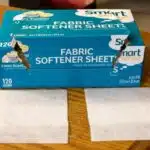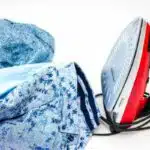As a textile expert, one of the most common questions I receive is how to soften bed sheets. Soft sheets are not only comfortable to sleep on, but they can also enhance the overall aesthetic of your bedroom. However, achieving that softness can be a challenge, especially if you have just purchased new sheets or have been using the same ones for a while.
In this article, I will provide you with practical tips on how to soften your sheets and make them feel like they are brand new. From using natural fabric softeners to adjusting your washing techniques, there are several ways to achieve that luxurious softness that we all desire. By following my advice, you will not only improve your own comfort but also create an inviting atmosphere for anyone who shares your bed.
Understanding The Composition Of Your Sheets
Understanding Fabric Composition is crucial to successfully softening your sheets. Cotton is the most common fabric used for bed sheets due to its breathability, durability, and absorbency. However, not all cotton is created equal. Egyptian cotton has longer fibers, known as staples, which produce smoother and stronger threads. On the other hand, Pima cotton has a shorter staple length but still produces high-quality sheets.
Thread Count Importance cannot be ignored when choosing bed sheets. Thread count refers to the number of threads woven into one square inch of fabric. Generally, a higher thread count indicates a softer and more durable sheet. However, beware of manufacturers who artificially inflate thread counts by twisting multiple thin threads together to create one thicker thread. This technique may result in a higher thread count but does not necessarily equate to better quality or comfort.
To soften your sheets effectively, it is important to start with the right foundation – understanding your sheet’s fabric composition and thread count importance. Once you have this knowledge under your belt, you can move on to choosing the right detergent that will complement the specific type of sheet you own.
Choosing The Right Detergent
When it comes to softening your sheets, choosing the right detergent is crucial. It is important to choose a detergent that is gentle and effective in cleaning without causing any damage to the fabric. A good quality detergent that is formulated for delicate fabrics will ensure that your sheets remain soft and comfortable.
One of the most important things to consider when choosing a detergent for your sheets is its pH level. Detergents that are too alkaline or acidic can cause damage to the fabric, making it rough and scratchy. Opt for a neutral pH detergent that is gentle on the fibers, while effectively removing dirt and stains.
Fabric softener alternatives can also be considered as an option when choosing a detergent. Some people prefer using vinegar or baking soda as natural alternatives, which can help soften the fabric while also eliminating any unpleasant odors. These options are also eco-friendly and cost-effective, making them a great choice for those who want to avoid harsh chemicals.
Transition sentence: Now that we have discussed how to choose the right detergent for your sheets, let’s explore some tips on avoiding fabric softener buildup.
Avoiding Fabric Softener Buildup
Softening your sheets is crucial for a comfortable and relaxing sleep. However, it’s important to know how to do it without using fabric softeners that can cause buildup and damage over time. Fabric softeners are chemical-based products that contain harmful substances, including synthetic fragrances and surfactants that can irritate the skin.
To avoid fabric softener buildup, it’s best to use natural alternatives that are safe for you and the environment. One option is adding baking soda to your wash cycle, which helps soften the water and loosen up any dirt or stains on your sheets. Another alternative is using white vinegar as a fabric softener during the rinse cycle. This will not only help soften your sheets but also remove any residual detergent left on them.
Washing tips are also essential when trying to avoid fabric softener buildup. For instance, avoid overloading your washing machine as this can prevent proper rinsing of your sheets. Also, always use the recommended amount of detergent according to the load size and hardness of your water. Lastly, try washing your sheets in warm water instead of hot water as this can help reduce the amount of detergent needed.
Using natural alternatives and following proper washing tips can help you achieve softer sheets without damaging them in the long run. In the next section, we will discuss how you can try vinegar as a natural softener for your sheets.
Trying Vinegar As A Natural Softener
- Using vinegar as a natural softener is a beneficial and cost-effective way of softening fabrics.
- Vinegar has been used in fabric softening for hundreds of years as it is a natural and safe product to use.
- Vinegar is available in different types, such as white vinegar, apple cider vinegar, and balsamic vinegar, which all have different pH levels and affect the fabric differently.
- When using vinegar for fabric softening, it is important to consider the type of fabric, the type of vinegar, and the amount of vinegar used.
Benefits Of Vinegar
Soft, fresh-smelling sheets are a dream for everyone. However, many fabric softeners available in the market contain harmful chemicals that can harm both your skin and the environment. Luckily, there’s an all-natural solution to soften your sheets: vinegar. As a textile expert, I can attest that vinegar as a fabric softener has numerous benefits over chemical-based ones.
One of the most significant benefits of using vinegar as a natural fabric softener is its cost-effectiveness. Unlike commercial fabric softeners that come with a hefty price tag, vinegar is readily available and affordable. Additionally, it’s non-toxic and safe for use on all types of fabrics, including delicate ones. With vinegar as your go-to softener, you’ll save money while reducing your exposure to harsh chemicals.
Another advantage of using vinegar as a natural fabric softener is its versatility. You can use it alone or mix it with other natural ingredients to create a DIY vinegar fabric softener recipe that suits your preferences. Vinegar also helps eliminate odors from your clothes and reduces static cling without leaving any residue behind. With these benefits in mind, it’s clear that choosing vinegar over chemical-based fabric softeners is an excellent choice for those looking to live a more sustainable lifestyle.
In conclusion, if you’re looking for an affordable, versatile, and eco-friendly way to soften your sheets naturally, then look no further than vinegar! It offers numerous benefits over chemical-based fabric softeners while being easy on both your wallet and the environment. By incorporating DIY vinegar fabric softener recipes into your laundry routine, you’ll enjoy softer and fresher-smelling sheets while doing your part to protect the planet.
Types Of Vinegar
When it comes to using vinegar as a natural fabric softener, there are different types of vinegar that you can use for this purpose. White distilled vinegar is the most commonly used type of vinegar for fabric softening. However, there are other types of vinegar available in the market, each with its unique benefits. For example, apple cider vinegar has a pleasant scent and is gentler on fabrics than white distilled vinegar.
Using different types of vinegar for softening sheets offers numerous benefits over chemical-based fabric softeners. For instance, these vinegars are non-toxic and safe for use on all types of fabrics, making them ideal for people with sensitive skin or allergies. Additionally, they’re affordable and readily accessible compared to commercial fabric softeners that contain harmful chemicals.
By using different types of vinegar as your go-to fabric softener, you’re not only saving money but also reducing your carbon footprint. Vinegar is an eco-friendly alternative to chemical-based fabric softeners since it’s biodegradable and doesn’t harm the environment. With the numerous benefits that come with using different types of vinegar for softening sheets, it’s clear that incorporating them into your laundry routine is a step towards living a more sustainable lifestyle.
Using Baking Soda To Soften Hard Water
One of the most common issues that people face while washing their clothes is hard water. Hard water contains minerals like calcium and magnesium, which can leave your sheets feeling stiff and rough. However, there are many ways to combat this problem, one of which is using baking soda.
Baking soda is a natural cleaning agent that has numerous benefits when it comes to softening your sheets. It helps break down the minerals present in hard water and prevents them from bonding with the fabric fibers. This allows your sheets to feel softer and more comfortable against your skin.
If you don’t have baking soda on hand or are looking for an alternative, there are other options available to you. White vinegar, for example, is another effective solution for softening hard water while also removing any odors from your sheets. Simply add half a cup of white vinegar during the rinse cycle of your washing machine.
Incorporating baking soda into your laundry routine has many benefits beyond just softening your sheets. It’s a cost-effective solution that’s gentle on both fabrics and skin, making it a great option for anyone looking to improve their laundry game without breaking the bank. With these simple tips, you can enjoy soft, cozy sheets every night without having to worry about harsh chemicals or high costs.
Transition: Now that we’ve seen how baking soda can help soften our sheets and improve our laundry routine let’s explore how adding some essential oils can enhance not only the softness but also the fragrance of our linens.
Adding Essential Oils For Fragrance And Softness
To further enhance the softness and fragrance of your sheets, consider adding essential oils to your laundry routine. Essential oil blends are a great way to not only add a pleasant scent to your sheets but also provide the benefits of aromatherapy. There are many different essential oils you can choose from, each with its unique properties and benefits.
Here are four popular essential oil blends that you can use in your laundry to soften your sheets and create a relaxing atmosphere in your bedroom:
Lavender: Known for its calming properties, lavender essential oil is a popular choice for bedding. It can help reduce stress and promote relaxation, making it an excellent choice for those who have trouble falling asleep.
Chamomile: Another calming essential oil, chamomile is known for its ability to soothe sore muscles and reduce anxiety. It can be especially beneficial for those who suffer from insomnia or other sleep disorders.
Eucalyptus: If you’re looking for a refreshing scent that will help clear your sinuses and promote respiratory health, eucalyptus essential oil is an excellent option. It’s also a natural insect repellent, so it can help keep bugs away from your bed.
Lemon: A bright and uplifting scent, lemon essential oil is great for adding freshness and energy to your bedding. It has antiviral properties that can help keep germs at bay, making it an excellent choice during cold and flu season.
By incorporating these essential oils into your laundry routine, you can enjoy the benefits of aromatherapy while also softening your sheets and creating a peaceful environment in your bedroom. For even better results, consider pre-soaking your sheets before washing them.
Pre-Soaking Your Sheets
Pre-soaking your sheets is an essential step to achieving soft and comfortable bedding. The benefits of pre-soaking include removing any stubborn stains or odors, increasing the lifespan of your sheets, and allowing for a more even distribution of detergent during the washing process. Pre-soaking also helps to prevent any discoloration or yellowing that may occur over time.
To pre-soak your sheets, fill a large basin or bathtub with warm water and add a gentle laundry detergent. Place your sheets in the water and allow them to soak for at least one hour before washing as usual. For heavily soiled or stained sheets, it is recommended to pre-soak for several hours or overnight.
It is important to note that pre-soaking should be done prior to washing and not as a substitute for washing altogether. Skipping this step may result in less desirable outcomes such as stiff or scratchy bedding. By taking the extra time to pre-soak your sheets, you will experience the difference in comfort and quality of your bedding.
Skipping The Dryer For Air-Drying
After pre-soaking your sheets, the next step to maximizing their softness is through proper drying techniques. While many opt for using a dryer, there are air drying alternatives that can yield even softer results. For instance, hanging your sheets outside on a sunny day not only reduces energy consumption but also gives them a fresh outdoor scent.
However, if outdoor drying is not possible or practical, you can still achieve optimal softness by using an indoor drying rack. This method allows for gentle air circulation around the fibers and prevents shrinkage or damage caused by high heat. Moreover, it’s important to avoid wringing or twisting your sheets during the drying process as this can cause stretching and weakening of the fabric.
To further enhance the softness of your sheets, here are some tips:
- Add a cup of white vinegar to the rinse cycle: This helps break down any residue left from detergents and fabric softeners that can make sheets stiff.
- Use fabric conditioner: This adds an extra layer of softness to the fibers and prevents static cling.
- Avoid overloading the washing machine: Overcrowding can lead to uneven moisture distribution and prevent proper cleaning and rinsing.
- Shake out your sheets before hanging them: This helps loosen any remaining wrinkles and promotes air flow for quicker drying.
Using wool dryer balls is another effective way of achieving maximum sheet softness while reducing static electricity and shortening drying time. These balls work by separating wet fabrics in the dryer, allowing hot air to circulate more evenly around them. In addition, they naturally fluff up fibers without leaving behind any chemical residues that may irritate sensitive skin.
Using Wool Dryer Balls
Wool dryer balls are a natural and environmentally friendly alternative to fabric softeners. They are made from 100% wool and can last for hundreds of loads. The benefits of wool dryer balls include softer and fluffier sheets, reduced drying time, and fewer wrinkles.
Comparing wool dryer balls to other fabric softening methods, they are a better choice because they do not contain harsh chemicals that can irritate sensitive skin or damage the environment. Fabric softeners also leave a residue on clothes that can attract dirt and bacteria over time, leading to unpleasant odors. Wool dryer balls, on the other hand, naturally absorb moisture and static electricity while breaking up clumps of wet laundry.
To use wool dryer balls, simply toss them in the dryer with your wet laundry and let them work their magic. For larger loads, use more than one ball to ensure maximum effectiveness. It is recommended to add a few drops of essential oils to the ball before starting the cycle if you prefer scented laundry.
Looking for an even more budget-friendly option? Consider trying tennis balls as a softening alternative. While they may not have the same natural benefits as wool dryer balls, they can still help reduce drying time by separating clothes in the dryer and preventing clumping. Just be sure to replace them after several uses as they may start to break down over time.
Trying Tennis Balls As A Softening Alternative
After trying wool dryer balls, you may be interested in experimenting with different fabric softener alternatives to soften your sheets further. One option is using white vinegar as a natural fabric softener. Simply add half a cup of white vinegar to the rinse cycle of your washing machine. The acidity of vinegar helps break down any leftover soap residue that can make your sheets feel stiff and scratchy. Vinegar also has antibacterial properties that can help eliminate any lingering odors on your bedding.
Another alternative to fabric softeners is using baking soda. Adding half a cup of baking soda to the rinse cycle can help balance the pH level of your sheets, making them softer and more comfortable to sleep on. Baking soda also acts as a natural deodorizer, eliminating any unpleasant smells from your bedding.
In addition to experimenting with different fabric softener alternatives, you can try different drying methods for even softer sheets. For example, hanging your sheets outside in the sun can give them a fresh and crisp feel while naturally eliminating bacteria and odors. Alternatively, air-drying your sheets indoors or on low heat in the dryer can prevent damage to the fibers, resulting in less shrinkage and longer-lasting softness.
To achieve extra softness on your sheets, consider ironing them after they have been washed and dried. Ironing helps smooth out any wrinkles or creases that can cause discomfort while sleeping. Plus, it adds an extra layer of warmth and coziness during colder months. By experimenting with different fabric softener alternatives and drying methods, you’re sure to find a combination that works best for you and provides ultimate comfort for a good night’s sleep.
Ironing For Extra Softness
- When ironing for extra softness, the appropriate temperature of the iron should be determined by the fabric type.
- Generally, a lower temperature should be used for delicate fabrics such as silk or lace, while a higher temperature is suitable for more robust fabrics like cotton or linen.
- Utilizing steam while ironing can also be beneficial in terms of softness, as the steam breaks down the fibers and makes them more pliable.
- When using steam, the setting should be adjusted based on the fabric type, as a higher steam setting can damage more delicate fabrics.
- To ensure the best results when ironing for softness, fabrics should be ironed on the wrong side to avoid visible creases and damage to fabric.
- In addition, fabrics should be ironed while damp to prevent over-drying and damage to fibers.
Ironing Temperature
Are you looking for a way to make your sheets extra soft and comfortable? One of the most effective ways to achieve this is by ironing them at the right temperature. As a textile expert, I highly recommend adjusting your iron’s temperature to get the best results.
Before you start ironing, it’s crucial to choose the right iron. Look for one with adjustable temperature settings that can cater to different types of fabrics. This will allow you to avoid damaging your sheets and get the best possible results.
Once you have the right iron, adjust its temperature according to your sheet’s fabric type. For example, if your sheets are made of cotton, set your iron’s temperature between 300°F and 400°F. Also, consider adjusting ironing time based on how thick or thin your sheets are. By following these simple steps, you’ll be able to achieve perfectly soft and smooth sheets in no time!
Steam Settings
Now that we’ve discussed adjusting the iron’s temperature to achieve extra softness, let’s move on to another important aspect of ironing – steam settings. Steam can be incredibly helpful in avoiding wrinkles and achieving a polished look for your sheets. However, it’s crucial to adjust the steam setting according to the fabric type.
For cotton sheets, it’s recommended to use high steam settings as this fabric type can handle moisture well. On the other hand, if you have silk or satin sheets, use low steam settings as these fabrics are more delicate and prone to damage from too much moisture. Additionally, always make sure that there is enough water in the iron’s reservoir before using the steam function.
Adjusting steam settings correctly can make a significant difference in how your sheets look and feel after ironing. It not only helps avoid wrinkles but also adds an extra layer of softness to your bedding. By following these simple guidelines for adjusting your iron’s temperature and steam settings, you’ll be able to achieve perfectly smooth and comfortable sheets every time you do laundry.
Fabric Types
Ironing is an essential part of laundry care, and it can make a significant difference in the way your sheets look and feel. Achieving extra softness through ironing requires adjusting the temperature and steam settings according to the fabric type. As a textile expert, it’s crucial to understand how different fabrics react to heat and moisture.
Cotton sheets are known for their durability and ability to handle high temperatures. When ironing cotton sheets, it’s recommended to use high steam settings as this fabric type can handle moisture well. By using high steam settings, you’ll be able to achieve a perfectly smooth finish while adding an extra layer of softness to your bedding.
On the other hand, silk or satin sheets are more delicate and prone to damage from too much moisture. It’s best to use low steam settings when ironing these fabrics to avoid any potential damage. The benefits of silk include its lustrous appearance and soft texture, but it requires gentle care when washing and ironing. Meanwhile, flannel sheets have disadvantages such as its tendency to shrink or pill when exposed to high heat, making it necessary to adjust the temperature accordingly.
By understanding how different fabric types react to heat and moisture, you’ll be able to achieve extra softness through ironing without damaging your sheets. Remember that proper care is essential in maintaining the quality of your bedding materials. As a textile expert, I encourage everyone who has a subconscious desire for serving others by ensuring that their bedding is always comfortable and cozy through proper laundry care techniques.
Fluffing Your Sheets In The Dryer
After washing your sheets, it is essential to fluff them in the dryer to soften them up. Fluffing your sheets in the dryer is a simple process that involves placing them in the machine and turning it on. However, there are a few tips and tricks that can help you achieve the perfect level of softness.
Firstly, you should avoid using dryer sheet alternatives such as tennis balls or wool dryer balls. Although these items can help to fluff up your sheets, they do not have any softening properties. Instead, consider using eco-friendly softening methods such as adding a cup of vinegar to the rinse cycle or using a natural fabric softener made from essential oils.
Secondly, make sure you do not overload your dryer when fluffing your sheets. Overloading can result in uneven drying and can cause wrinkles and creases that are difficult to remove. It is best to dry your sheets in smaller loads so that they have plenty of space to move around inside the machine.
Lastly, remove your sheets from the dryer as soon as they are dry to prevent over-drying. Over-drying can cause damage to the fibers of your sheets and make them rough and scratchy. By following these simple tips for fluffing your sheets in the dryer, you will be able to achieve soft, fluffy bedding every time.
To ensure that your freshly softened sheets stay in good condition for longer, it is important to store them properly. Proper storage prevents wrinkling and damage caused by exposure to light or dust. In the next section, we will discuss some effective techniques for storing your freshly softened sheets.
Storing Your Sheets Properly
Folding sheets is an important part of proper storage as it helps protect them from damage and dirt when stored away. Fabric softeners may be used to help make sheets softer and more comfortable when used, however, they should not be used too often as this can damage the sheets. It is recommended to use a fabric softener every six weeks or so in order to reduce any potential damage. Before using a fabric softener, it is important to read the manufacturer’s instructions to ensure correct usage.
Folding Sheets
As a textile expert, I understand the importance of proper folding techniques in maintaining the quality of your sheets. Improper folding can lead to wrinkles and creases that are difficult to remove, making it hard to achieve that soft and smooth feel you desire. To prevent this, always make sure to fold your sheets neatly and carefully.
One technique for proper folding is to start by laying the sheet flat on a clean surface with the fitted sheet facing down. Fold the sheet in half vertically, bringing one corner up to meet the other. Next, fold the sheet in half horizontally so that all four corners are together. Then, fold the sheet in thirds lengthwise before finally folding it into a neat square. This method ensures that your sheets remain wrinkle-free and easy to store.
When it comes to storing your sheets properly, there are several options available. You may choose to use linen closets or shelves if you have enough space available. Alternatively, you could also opt for vacuum-sealed storage bags which help reduce bulk while keeping your sheets protected from dust and moisture. Whatever storage option you choose, make sure it is clean and dry before placing your freshly folded sheets inside.
In conclusion, proper folding techniques and storage options play an important role in keeping your sheets soft and comfortable. By taking care when folding and choosing the right storage option for you, you can ensure that your sheets remain in great condition for years to come. So go ahead and try out these tips today!
Fabric Softeners
Proper storage of your sheets is crucial in maintaining their quality, but did you know that fabric softeners can also play a significant role? Fabric softeners are designed to make fabrics feel softer and smoother by reducing static electricity and minimizing wrinkles. They can also help reduce drying time, making it easier to store your sheets properly.
The benefits of using fabric softeners cannot be denied. They not only enhance the feel of your sheets, but they can also prolong their lifespan by protecting them from wear and tear. However, some people may prefer alternatives to fabric softeners due to concerns about their environmental impact or the use of chemicals. Alternatives include vinegar or baking soda added to the wash cycle or wool dryer balls used during drying.
When deciding whether to use fabric softeners or alternatives, it is important to consider what works best for you and your needs. Whatever option you choose, remember that proper storage is still essential in keeping your sheets in great condition. So, after washing and using fabric softener or an alternative, fold your sheets neatly using the proper technique and store them in a clean and dry space. With these tips in mind, you can enjoy comfortable and well-maintained sheets for years to come.
Changing Your Sheets Regularly
Regular sheet maintenance is crucial to ensure a good night’s sleep. Clean sheets have numerous benefits that go beyond just their aesthetic appeal. They reduce the risk of allergies, help regulate body temperature, and improve overall hygiene. Neglecting sheet maintenance can lead to health problems such as skin irritations, respiratory infections, and even bed bugs.
It is recommended to change your sheets at least once every two weeks or more frequently if you sweat heavily or have a medical condition. Additionally, it is important to wash them in hot water with a gentle detergent to remove any bacteria, dust mites, or dead skin cells that may accumulate over time. Hanging them outside to air dry is also beneficial in killing any remaining germs and giving them a fresh scent.
Investing in high-quality sheets for lasting softness is an excellent way to improve your overall sleep experience. These sheets are made from superior materials that resist wear and tear, maintain their shape after washing, and feel silky smooth against your skin. Some popular options include Egyptian cotton, bamboo rayon, and microfiber blends. While they may cost more upfront, the long-term benefits outweigh the initial investment by providing unparalleled comfort and durability.
Investing In High-Quality Sheets For Lasting Softness
When it comes to bedding, investing in high-quality sheets can be worth the cost. Not only do they provide a more luxurious feel, but they also tend to last longer than cheaper options. High-quality sheets are often made from materials such as Egyptian cotton or bamboo, which are known for their softness and durability.
There are several benefits to investing in high-quality sheets. Firstly, they can improve the overall comfort of your sleep, allowing you to wake up feeling refreshed and well-rested. Additionally, they can help regulate your body temperature by wicking away moisture and keeping you cool during hot summer nights. Furthermore, high-quality sheets can add an aesthetic appeal to your bedroom decor with their smooth texture and elegant appearance.
To maintain the softness of your sheets, there are several tips and tricks to follow. Firstly, avoid using fabric softeners or dryer sheets as these can leave a residue that reduces the absorbency and softness of your sheets over time. Instead, opt for natural detergents without harsh chemicals or fragrances. Secondly, wash your sheets in cool water on a gentle cycle to prevent shrinkage and damage to the fibers. Finally, hang dry or tumble dry on low heat to avoid excessive heat exposure that can lead to fading or shrinking.
Investing in high-quality sheets is worth considering if you want a more comfortable and luxurious sleeping experience. By following proper care instructions and avoiding common mistakes like using harsh detergents or excessive heat exposure during washing and drying cycles , you can maintain the softness of your sheets for years to come.
Conclusion
Softening your sheets can make a significant difference in the quality of your sleep, and luckily, it doesn’t have to be complicated. Understanding the composition of your sheets is essential as it determines how they react to different cleaning agents. Choosing the right detergent, avoiding fabric softener buildup, trying vinegar as a natural softener, using baking soda to soften hard water are all effective ways to soften your sheets.
Fluffing your sheets in the dryer and storing them properly can also help maintain their softness. Changing your sheets regularly is crucial as it prevents the accumulation of dirt and sweat that can make them stiff. Investing in high-quality sheets can also provide lasting softness and durability.
According to a survey conducted by SleepBetter.org, 73% of Americans believe that comfortable bedding is essential for a good night’s sleep. As such, taking care of our sheets is crucial for our overall well-being. Following these simple steps will not only keep our bedding soft but also improve our sleeping experience. As textile experts recommend, understanding how our linens react to different cleaning agents and investing in high-quality materials is key to achieving optimal comfort in our sleep environment.
Image Credits
- “In The Kitchen” by Joe Shlabotnik (featured)





























